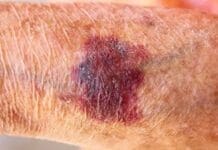COVID-19 dominates the news these days: we haven’t lived a day since January 2020 without being inundated by it, but that doesn’t mean that other diseases no longer exist. In the world of medicine, there is another pandemic that we see every day, however the discussion of it as a disease is largely avoided – it’s obesity.
Acceptance of obesity as a disease is disputed in the media. Because of “fat shaming” there is definitely a stigma about the topic. But, obesity is certainly no less of a disease than the conditions it causes: type 2 diabetes, heart disease, high blood pressure, kidney disease, liver disease, orthopedic problems, and cancer. Obesity can cause a host of psychosocial issues, too: depression, anxiety and social isolation to name but a few.
Addressing all these concerns is my job as a primary care provider, but my goal is not to make my patients supermodels. Eating disorders run the spectrum, and thinness comes with its own set of health and psychosocial problems. I want patients to maintain a “healthy weight,” but what determines that? BMI (body mass index), which is essentially a height to weight ratio, is one measure that healthcare providers use to evaluate obesity. A BMI of 20-25 is “normal,” 25-29 is “overweight,” 30-39 is “obese,” and 40 or greater is “morbidly obese.” Admittedly, BMI is not an optimal tool to evaluate obesity, as it does not necessarily correlate to body composition (such as the case of a weight lifter with a high BMI, but a fantastic physique). Still, BMI is the generally accepted method for the determination of obesity (the reasons for this is another discussion entirely).
Obesity by the numbers:
• Worldwide obesity has nearly tripled since 1975.
• In 2016, more than 1.9 billion adults, 18 years and older, were overweight. Of these over 650 million were obese.
• 39% of adults aged 18 years and over were overweight in 2016, and 13% were obese.
• Most of the world’s population live in countries where overweight and obesity kills more people than underweight.
• 39 million children under the age of 5 were overweight or obese in 2020.
• Over 340 million children and adolescents aged 5-19 were overweight or obese in 2016.
• Obesity is preventable.
(World Health Organization, www.who.int/news-room/fact-sheets/detail/obesity-and-overweight, accessed 10/25/2021)
In today’s society, we look for convenience in everything, especially food consumption. We are busy, yet more sedentary than ever. Convenience and a sedentary lifestyle comes at a price. In terms of food products, convenience translates into high sugar, high fat and high preservative (i.e. salty) foods. When counseling my patients about weight loss, I tell them that weight loss can be as simple as this: calories burned must exceed calories consumed, or the extra calories stay on as weight. Eliminate processed foods and drinks altogether; include only fresh vegetables, lean white meats, and whole grains (limit fresh fruits, they are high in sugar). Avoid alcohol (it slows metabolism and encourages poor eating habits), and drink lots of water. Exercise is a must – walking a minimum of 10,000 steps daily is necessary. Weight training increases muscle mass, thus increasing the body’s ability to burn calories even while resting. We can also use medicines (appetite suppressants and medications to increase insulin production or sensitivity) and technology (using noninvasive body sculpting) to boost results.
If you are having difficulty with weight loss, please discuss the issue with your healthcare provider. A physical exam and labs to check blood chemistries, thyroid, cholesterol and hormones can give insight to your problem. Referrals to specialists may even be necessary. Where weight loss is concerned, there is no “magic pill”; it requires a combination of all these methodologies. The key to success is a sustainable plan. Also realize that perfection is not the goal, rather healthful weight management to avoid long-term problems.
Stacy Kehl, APRN, FNP-BC is with Elements Primary Care & Esthetics, 8406 Panama City Beach Pkwy., Suite K, (850) 708-1623, ElementPCP.com.






















































